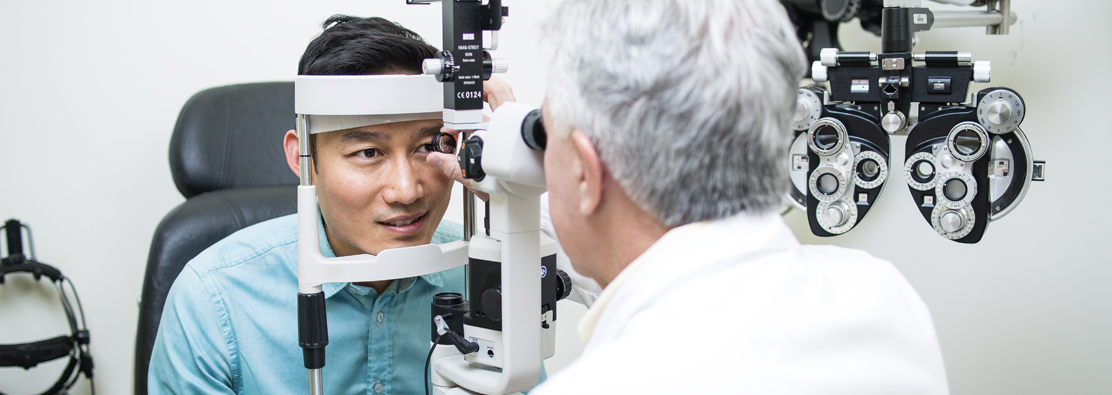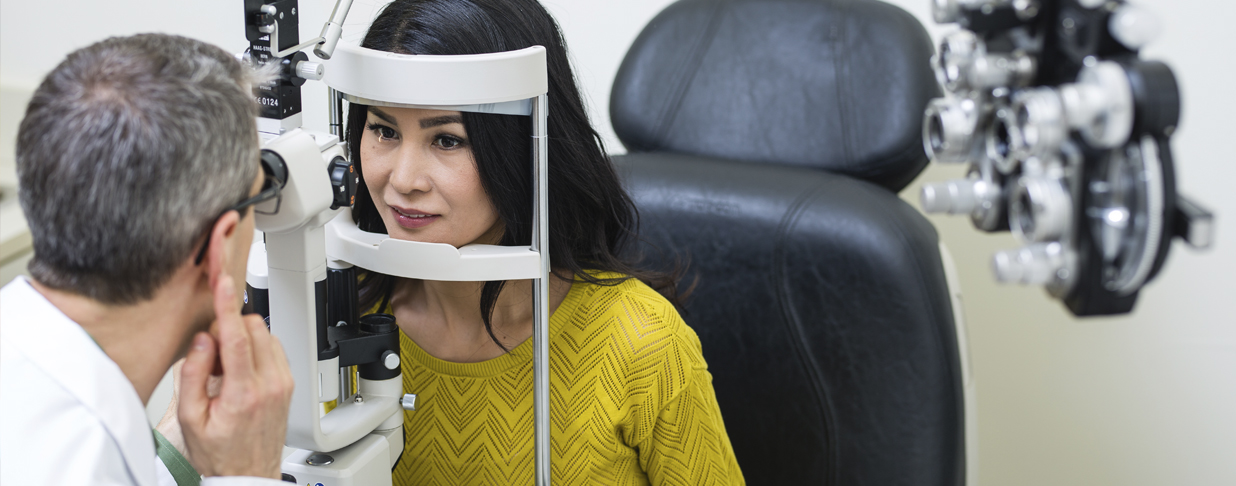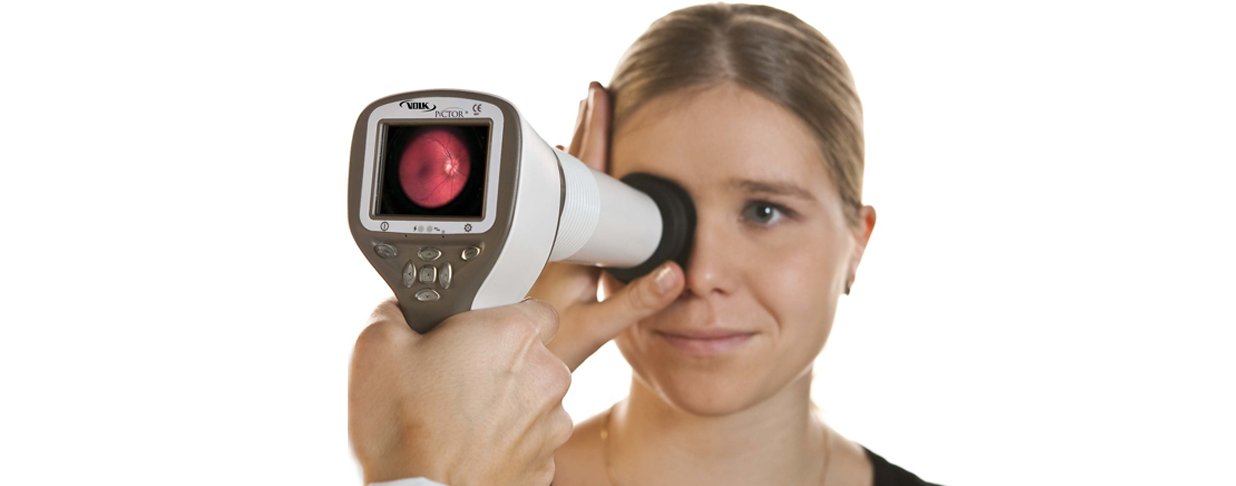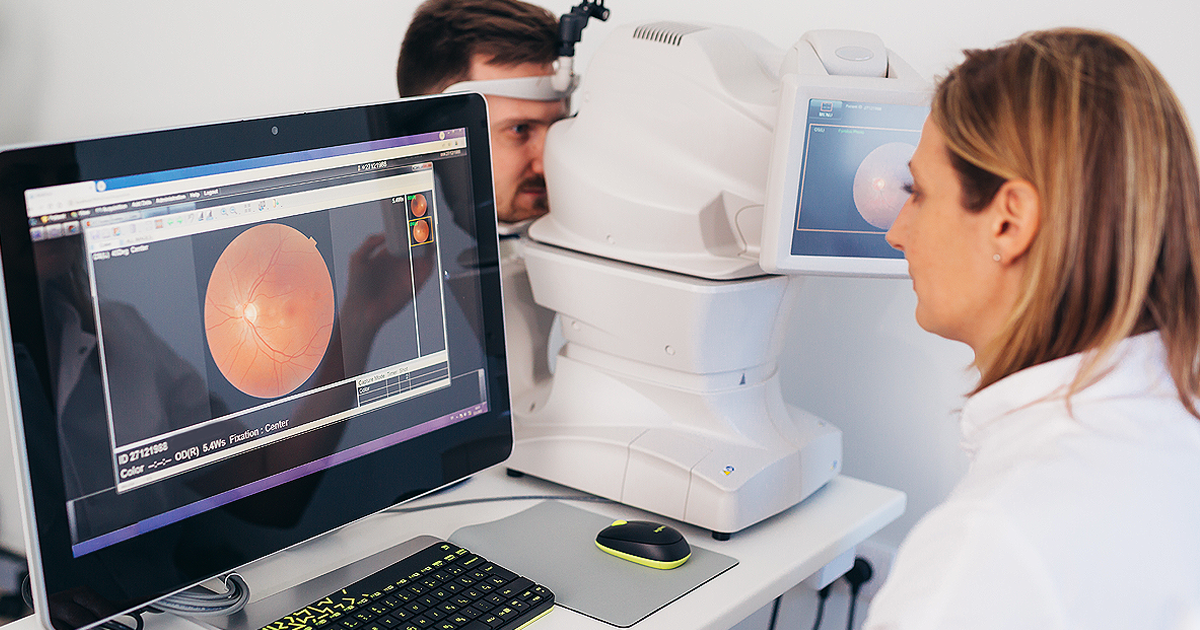“My vision is perfectly fine. I don’t wear glasses and never have, so I don’t need an eye exam.”
The logic seems…logical, but it actually makes the mistake of equating vision quality with eye health. Someone can be in incredible athletic shape and still have a major health issue; likewise, even 20/20 vision can mask a real problem.
In today’s world, eyes are up against incredible challenges. Tablets, smartphones, TVs, computer monitors, game systems and laptops bombard eyes with blue light. In fact, Americans average 7 hours per day looking at a screen— our culture makes it hard to look away.1 Eyes need regular checkups, no matter what shape they seem to be in.
You may need vision care and not know it
An estimated 93 million Americans are at risk for vision loss, but only half of them visited an eye doctor in the last year.2
How is it possible for so much vision loss to go undetected and untreated? Eyesight often changes slowly — too slowly for you to notice. Even for serious vision problems, you might not notice any symptoms while they’re still in the early stages.
Dr. Rashad Haddad, LensCrafters Optometrist, shares additional insight: “Surprisingly, vision care is often overlooked by many adults. A annual eye exam isn’t just about vision; it can also provide information about a person’s overall health and serve as an early indicator of other conditions—like diabetes, which can lead to diabetic retinopathy, a serious eye disease. By tracking the impact of other health issues through regular eye exams, patients can help better protect their vision and overall health.”
The good news is that up to 90% of vision loss is preventable or treatable.3 The bad news is that serious eye diseases often show no warning signs until it’s too late to treat them or slow them down. Through a comprehensive exam, an eye doctor can detect vision problems that a screening might miss.
Regular vision care is essential to detect and mange serious eye conditions like:
Cataracts 4,5
What it is: Clouding of the lens
Frequency: More than half of Americans over 80 either have cataracts or have had cataract surgery
First signs: Blurring and hazing gradually grows
If found early: Eyeglasses, lighting and other visual aids may improve vision, but there’s no fix other than surgery; an eye doctor can track progress to know when surgery is needed
Glaucoma 6,7,8
What it is: Elevated pressure on the optic nerve
Frequency: 3 million Americans; half of them don’t know it
First signs: Early signs can only be detected through an eye exam; loss of peripheral vision happens so slowly that it’s unnoticed until it’s too late
If found early: Medicine and eye drops may prevent glaucoma from getting worse; unfortunately, treatment can’t reverse vision loss once the nerve is damaged
Diabetic Retinopathy 9,10
What it is: Retina damage caused by sugar build-up
Frequency: Nearly 30% of Americans over 40 with diabetes
First signs: No early signs — usually appears only after diabetes is present for a while; later signs are blurry vision and floating spots
If found early: Controlling blood sugar and blood pressure may halt vision loss but mostly it cannot be reversed
Age-Related Macular Degeneration 11,12
What it is: Deterioration of central part of retina
Frequency: 11 million in the U.S., leading cause of vision loss over 50
First signs: Blurred area in central vision slowly gets larger over time
If found early: No treatment for early cases, so tracking is critical; treatment for more advanced cases can slow progression
Regular eye exams can detect incremental changes that people often miss. Learn how EyeMed removes the barriers to getting an annual eye exam—contact your EyeMed representative or visit eyemed.com.
***
1Howarth, J.; “Alarming Average Screen Time Statistics”; Exploding Topics; explodingtopics.com; January 2023.
2 “Fast Facts of Common Eye Disorders”; CDC Vision Health Initiative; cdc.gov; reviewed June 29, 2020.
3 “Treatable or Preventable Vision Loss”; The International Agency for the Prevention of Blindness; iapb.org; accessed March 2023.
4 Bailey, G.; “Cataracts: 3 common types, causes, symptoms and treatments”; allaboutvision.com; May 2022.
5 ”At a glance: Cataracts”; National Eye Institute; nei.nih.gov; January 2023.
6 Berdahl MD, J.; “Glaucoma: Symptoms, treatment and prevention”; allaboutvision.com; May 2022.
7 “At a glance: Glaucoma”; National Eye Institute; nei.nih.gov; February 2021.
8 “Don’t Let Glaucoma Steal Your Sight”; Center for Disease Control; cdc.gov; November 2020.
9 Bhavsar, A; “Diabetic Retinopathy”; Medscape; Medscape.com; December 2022.
10 “At a glance: Diabetic Retinopathy”; National Eye Institute; nei.nih.gov; July 2022.
11“At a glance: AMD”; National Eye Institute; nei.nih.gov; August 2020.
12 “Macular Degeneration”; Johns Hopkins Medicine, Wilmer Eye Institute; hopkinsmedicine.org; accessed Novamber 2020.




